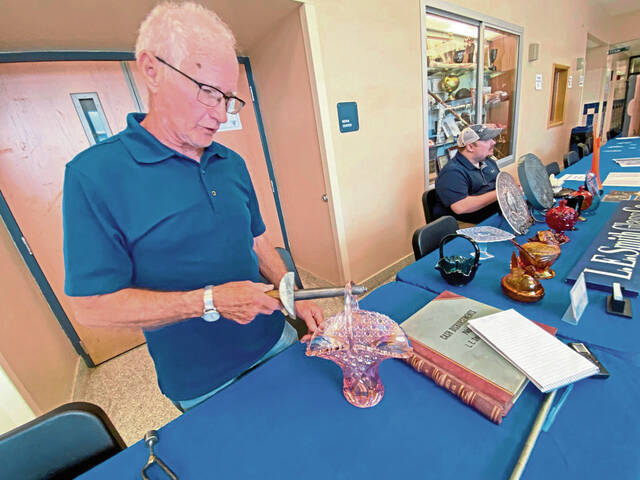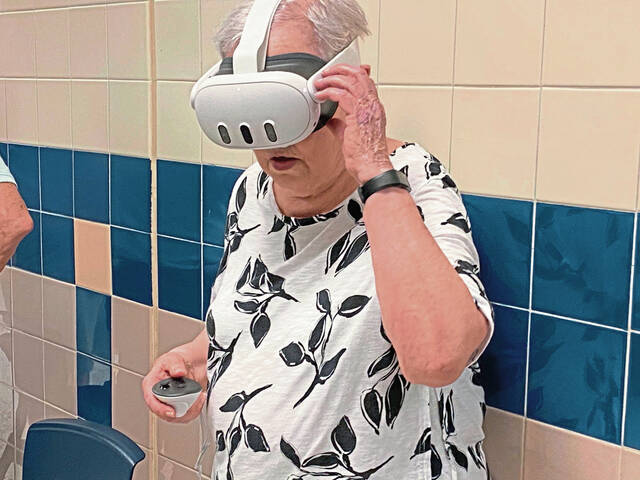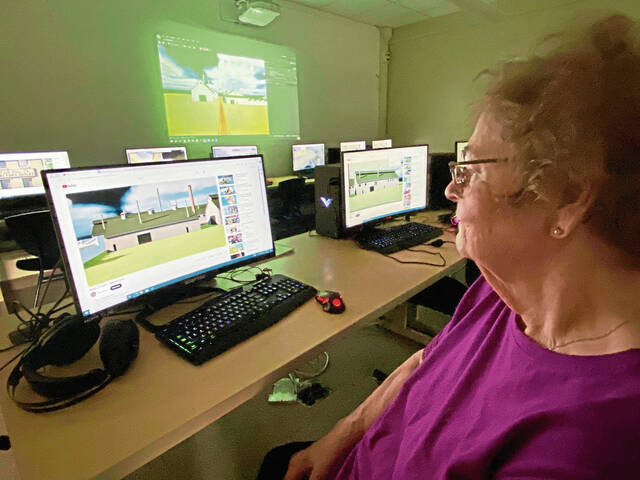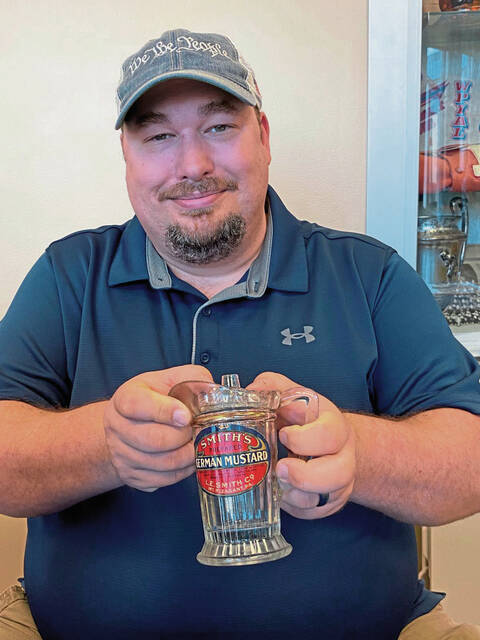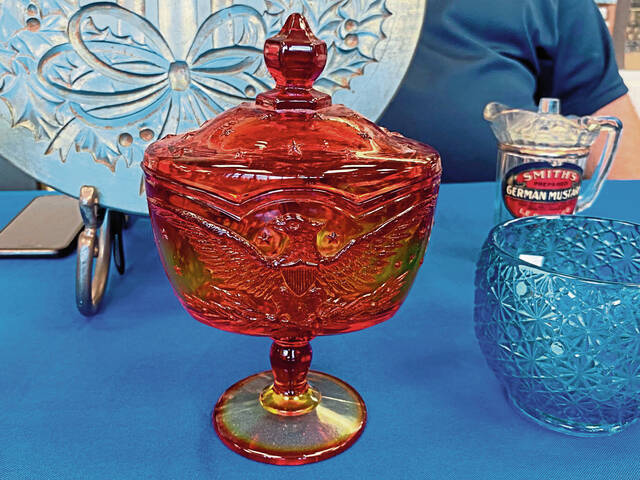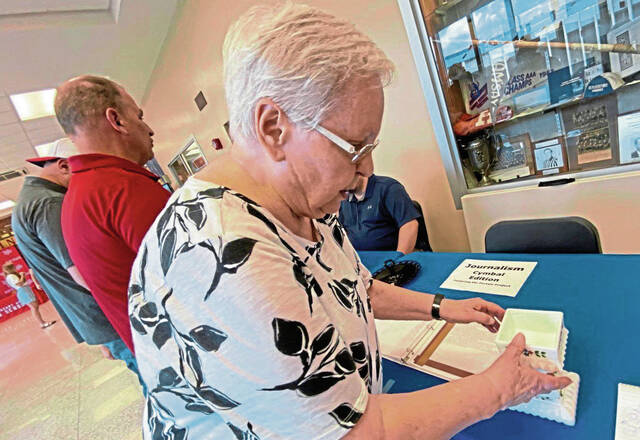Student project brings shuttered Mt. Pleasant glass plant back to virtual life
When Sandy Spence was a young girl, she would visit Mt. Pleasant’s L.E. Smith Glass plant, where her father, Cedric Spence Jr., began work as a foreman in 1946.
On Monday evening, she traveled from her current home in Lewes, Del., to revisit the site virtually.
Donning virtual reality goggles, Sandy Spence joined dozens of people who gathered at the Mt. Pleasant Area Junior-Senior High to take in a 3-D representation of the plant. Students at the school created the virtual version using gaming design software and digital scans of the closed factory that were revamped to portray what it looked like during active production in the 1950s through the 1970s.
“Oh, wow,” was her comment when she donned the headgear.
Spence’s father worked at the plant through 1976, advancing to vice president and treasurer.
Female staffers, whom her father and others often referred to as “the girls,” Spence said, were tasked with inspecting finished glassware for potential flaws.
People attending Monday’s program who didn’t want to wear the goggles could view the virtual imaging in two dimensions on a flat screen. It eventually will be posted in that format to a district YouTube channel, according to instructor Gary Gray, who supervised the students who produced the virtual plant tour.
Those attending the event were able to connect with the glass plant’s history in various ways, including through video and printed displays. They also could sample an orange-colored punch that featured a recipe from the plant’s former workers. The punch was served in souvenir glass cups, ladled from bowls that had been created at L.E. Smith years earlier, both using the factory’s pressed-glass process.
The Mt. Pleasant Area Historical Society displayed some other examples of vintage L.E. Smith glassware, while several were on loan from Spence’s collection.
She brought a milk glass candy dish hand-painted with a multi-colored floral pattern and a jet black glass cookie platter that gained its dark color from the addition of manganese.
“They used to put manganese in purple glass,” she said of the additive. “And if you added more than enough for purple, it turned it black.”
Historical society President Rick Meason exhibited a tall glass jar with a handle, lid and spout that L.E. Smith made in about 1910-1916 to contain a line of German mustard it produced. The fact that the product label remains intact enhances its value.
“It’s unusual to find them with a label,” Meason said of the jars. “Most people removed it.”
Don Sechrist of Scottdale was on hand to explain some hand tools similar to ones he used when he briefly worked at L.E. Smith for a few months in the early 1980s.
Among his tasks was gathering rods of hot malleable glass that were affixed to form handles atop pressed glass baskets. He showed how a graphite tool was used to shape the handle into the desired curve.
“It had a metal hand guard so you didn’t get burned,” he said.
Working with partner groups including the historical society, Epic Games and consultant Case Technologies, the school district decided to research the history of L.E. Glass and virtually recreate it after nearly 48% of about 40 survey respondents preferred the shuttered factory as a focus for a multi-faceted student project.
Two area historic sites — West Overton Village in neighboring East Huntingdon and Fort Ligonier — also were considered, according to Mt. Pleasant Area Assistant Superintendent Beth Hutson.
But, she said, “We decided to start with something simple.” As district students gain more sophisticated virtual reality skills, she noted, they may some day tackle a battle recreation from the fort.
For Monday’s program, which emphasized project-based learning, fifth graders displayed information they’d learned about the glass-making process, along with examples of glass mosaics. Eighth graders designed fliers to explain the project and 14 students in an Advanced Placement English class created a 6-minute video documenting the various pieces that came together for the effort.
The English students had less than two weeks to select and edit the various elements for the video, including vintage still images and on-camera interviews conducted with fellow students who worked on the 3-D plant recreation and with Secrhist and a second former factory worker.
They were able to tackle the assignment by splitting tasks among four groups of students.
“We divided and conquered with different computers,” said junior Abagail Govern.
Jeff Himler is a TribLive reporter covering Greater Latrobe, Ligonier Valley, Mt. Pleasant Area and Derry Area school districts and their communities. He also reports on transportation issues. A journalist for more than three decades, he enjoys delving into local history. He can be reached at jhimler@triblive.com.
Remove the ads from your TribLIVE reading experience but still support the journalists who create the content with TribLIVE Ad-Free.

